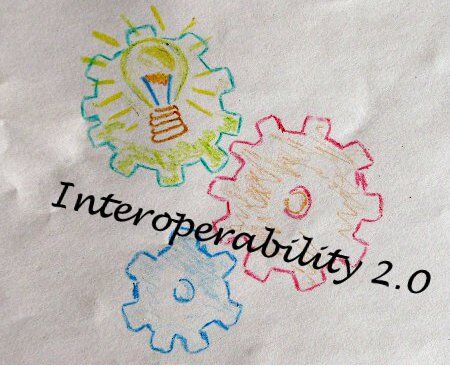Now that I whined a bit about 2.0 it is time to put my mark as well. I hear by declare Interoperability 2.0.
What is it? It is the current state of affair in mobile and where we are all headed in our future.
Dean Bubley announced the death of ubiquity in telecom:
But the problem is that from now on, Ubiquity is Dead in telecoms. Unfortunately, the telecoms past is not a reliable indication of how the future will evolve. New services can never become ubiquitous again, while the existing ones will slowly, but steadily, die. (See Martin Geddes’ fantastic article on “peak telecoms” for more).
Dean’s post is a long one, but a rather important one, so I urge you to read it. I tend to agree with what he thinks.
Ubiquity used to mean interoperability among all players in the ecosystem. It has brought us GSM, and in the context of my past decade of work, it has brought things like H.323, SIP and other VoIP related protocols and technologies. I meant to write at the impossibility of innovating in an interoperable world, but the more I tried, the more I understood this is not true: wherever you look today there is innovation, but there is still interoperability as well – it is just not the ubiquitous one – it is Interoperability 2.0.
Interoperability 2.0 means that we are focusing on making the lowest level infrastructure interoperate – that is having an all-IP network and some HTML(5) and other technologies and standards put in place. Along side this IP network, there are the ubiquitous services we’re already used for, but that’s about it. From there on – it’s the wild west.
Success in Interoperability 2.0 means being able to harness the power of the web technologies (that would be web 2.0 of course) and, at most, hook them up with existing ubiquitous services to create something new – something that is semi-interoperable.
There is no real need any longer for the services of a Telco, an OTT player or a startup to interoperate with others – it can thrive on an island of its own as long as that island is IP based and can connect to the “external world” when necessary.
Chetan Sharma just released a whitepaper about what he calls “Mobile Internet 3.0”: How Telcos can become service innovators. In a way, he is calling the operators to embrace Interoperability 2.0 and roll out such services of their own or enable others to do so. He gives quite a few areas where such activities make sense.
The most interesting of all are the initiatives you see today being taken and how they embrace the Interoperability 2.0 approach:
- Rogers One Number = Rogers in Canada are now offering a single mobile number you can connect to from your mobile phone or through a softphone on a PC. It takes the ubiquitous GSM/WCDMA phone call, hooks it up with a semi-standard VoIP call. It then adds video calling support on top of it, the ability to switch between phone and PC and other goodies that are impossible to achieve through interoperability today.
- Mavenir Systems – they now offer a messaging system for Telcos that connect SMS with IP. No need to wait for RCS clients to make their way to phones and then to deal with existing SMS deployments worldwide – just hook up a service on top that works in front of SMS services, but can also offer a lot more when you have an IP network and an updated phone.
These are things we will see more and more. The reliance on standards and interoperability for innovation and new service creation is going to take the backstage from now on. Once we have an ubiquity of an IP network and HTML5 on top, waiting for complex standards to evolve is a losing strategy.
Rolling out proprietary services that can run over any IP network and connect to ubiquitous services when needed will be the norm.
And that is Interoperability 2.0.

